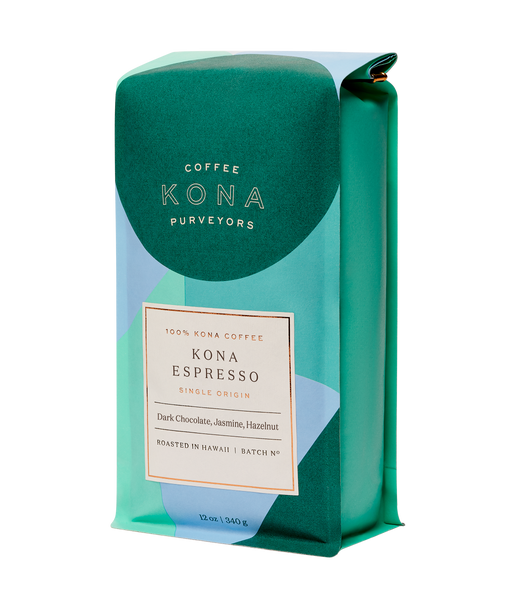The Coffee Lover’s Guide to SOE Single Origin Espresso Selections
The Coffee Lover’s Guide to SOE Single Origin Espresso Selections
Blog Article
Comprehending Coffee Beans: the Trip From Espresso to Blended Coffee Beans

The Beginnings of Coffee: A Global Perspective
While you may think of coffee as a contemporary staple, its beginnings trace back centuries, intertwining with societies throughout the globe. The tale begins in Ethiopia, where legend states a goat herdsman named Kaldi discovered the energizing impacts of coffee beans after discovering his goats romping vigorously after eating them.
As trade paths increased, coffee made its method to Europe in the 17th century, rapidly getting popularity. Each culture added its one-of-a-kind twist to coffee prep work, enriching its history.
Farming and Harvesting of Coffee Beans
As coffee's trip developed, the focus moved to the growing and harvesting of specific bean selections, specifically those made use of for espresso. You'll discover that espresso beans usually come from Arabica or Robusta plants, each offering distinctive tastes. The perfect growing conditions include high elevations and abundant, well-drained soil, which boost the beans' top quality.
During the harvest, selecting approaches differ. In some areas, employees hand-pick ripe cherries, guaranteeing only the most effective fruit mosts likely to processing. In other areas, mechanical farmers are made use of, especially on larger farms. When the cherries reach peak ripeness for optimum flavor., timing is crucial; you desire to collect.
Once collected, the beans are prepared for processing, which is important in determining their final taste. Comprehending the farming and harvesting processes offers you insight into what goes into your favorite coffee, enriching your admiration for each cup.
Handling Methods: From Cherry to Bean
Now that you've learned concerning harvesting coffee beans, let's explore just how those cherries transform into the coffee beans you like. You'll see just how different harvesting methods influence flavor, followed by the vital actions of fermentation and drying. Finally, we'll break down the milling and grading process that determines your coffee's high quality.
Harvesting Techniques Described
When it comes to coffee, understanding harvesting methods is vital, since they directly impact the flavor and high quality of the beans you appreciate. Careful choosing entails hand-picking just ripe cherries, guaranteeing you get the ideal quality beans. Ultimately, the option of collecting strategy can greatly affect your coffee experience, so it's worth understanding how those beans made it to your mug.
Fermentation and Drying
After gathering, the following steps in handling coffee beans play a considerable role in forming their flavor. You'll find that fermentation is vital, as it aids break down the mucilage bordering the beans, boosting their taste profile. Relying on the technique, this procedure can last from a few hours to a number of days, with differing results based on temperature and moisture.
Sun-drying enables the beans to absorb tastes from the setting, while mechanical drying out guarantees constant wetness levels no matter of weather condition. Appropriate drying out is essential to avoid mold and maintain the beans' quality, ultimately affecting your mug of coffee.
Milling and Grading Refine
As fermentation and drying established the stage for taste development, the milling and grading process assurances that only the best coffee beans make it to your cup. This phase includes removing the outer layers of the coffee cherry, consisting of the parchment and husk. Top notch beans receive a higher quality, resulting in a richer coffee experience.
Roasting Strategies: Opening Taste Possible
When you roast coffee beans, the method you choose can considerably influence the taste account. Recognizing the partnership between time, temperature, and roasting techniques is crucial to exposing the possibility of your brew. Allow's discover just how these components come together to produce the excellent mug.
Roasting Methods Explained
While you might believe that all coffee roasting techniques yield the very same outcomes, the reality is that each method discloses special taste possibilities in the beans. You can select between techniques like drum toasting, air roasting, or also typical pan roasting. Drum roasting makes use of a turning drum to equally distribute warm, enhancing caramelization and generating a well balanced taste. Air roasting, on the various other hand, flows warm air around the beans, advertising a lighter roast with pronounced acidity. Pan toasting enables for hands-on control but requires constant attention to stay clear of burning. Each approach has its subtleties, so explore different techniques can assist you discover the ideal roast that lines up with your taste choices. Appreciate the trip of finding your ideal mug!

Influence on Taste Account
Different roasting methods not only influence the process however additionally significantly impact the flavor profile of the coffee beans. When you pick a light roast, you'll experience brilliant acidity and floral notes, showcasing the bean's origin. In comparison, a medium roast balances level of acidity with sweet taste, commonly exposing chocolatey undertones. Dark roasts, on the various other hand, highlight strong, smoky tastes, occasionally concealing the bean's unique characteristics. Each technique reveals different oils and substances, causing a wide variety of tastes. By experimenting with various toasting styles, you can find which accounts resonate with your taste buds. Recognizing these nuances helps you appreciate the creativity behind your mug of coffee, improving your overall experience with every sip.
Time and Temperature Level Variables
To release the complete flavor potential of coffee beans, both time and temperature level throughout the roasting procedure play considerable duties. When roasting, you'll locate that greater temperatures can promptly establish tastes, however if you hurry it, you could wind up with burned notes. Conversely, reduced temperatures enable a much more steady taste growth, showcasing the beans' distinct characteristics.

Timing is simply as essential; prolonging the roast also long can result in a loss of level of acidity and illumination, while also short a roast could leave the beans underdeveloped. Finding that sweet place needs method and trial and error. By changing these aspects, you can reveal the abundant, complicated tastes hidden within each bean, producing a really impressive coffee experience.
The Art of Mixing: Crafting One-of-a-kind Coffee Profiles

Start by selecting a base coffee that offers a solid structure. Then, pick corresponding beans to improve specific taste notes. A brilliant Ethiopian bean can bring fruitiness, while a rich Brazilian coffee adds body. Testing is key-- do not be afraid to change proportions until you find your excellent account.
As you mix, bear in mind that each combination narrates. You're not simply making coffee; you're developing an experience. So, take your time, preference regularly, and take pleasure in the journey of finding your signature mix.
Brewing Methods: Exactly How Prep Work Affects Flavor
Blending coffee opens up a domain name of taste opportunities, however how you brew that mix can considerably influence your last cup. On the other hand, a pour-over highlights the coffee's clearness and brightness, ideal for showcasing delicate notes.
Coffee, with its high stress, creates a concentrated shot that emphasizes sweet taste and crema. If you favor a lighter mixture, think about a cold brew technique; it yields a smooth, much less acidic preference.
Readjusting variables like water temperature, grind size, and brew time can change your coffee's account. Welcome the art of developing to discover the tastes hidden in your coffee blends.
The Future of Coffee: Sustainability and Technology
As the coffee sector advances, sustainability and innovation are ending up being important for attending to ecological obstacles and conference consumer demands. You'll notice that more coffee firms are embracing eco-friendly practices, from sourcing beans fairly to executing lasting farming strategies. These changes not just help the planet however likewise enhance the quality of the coffee you enjoy.
You might see technologies like naturally degradable packaging and water-saving brewing techniques that decrease waste. Advanced innovation, such as blockchain, is also coming to be preferred, ensuring openness in the supply chain, which permits you to trace your coffee back to its origins.
On top of that, buying neighborhood neighborhoods and sustaining farmers via fair profession efforts fosters a much more lasting coffee ecosystem. As you drink your following cup, bear in mind that your options can add to a brighter future for coffee. By selecting lasting brand names, you're not just enjoying a beverage; you're making a positive influence on the world.
Often Asked Inquiries
What Is the Difference Between Arabica and Robusta Beans?
Arabica beans are smoother, sweeter, and have a higher acidity, while robusta beans are stronger, more bitter, and include even more high levels of caffeine. When making your coffee., you'll discover these differences in taste and aroma.
How Does Altitude Affect Coffee Bean Taste?
Altitude effects coffee bean flavor substantially. Greater altitudes create beans with brighter level of acidity and complicated flavors, while lower altitudes commonly produce beans that are much heavier and less nuanced. You'll observe these distinctions in your cup!
What Are the Health Conveniences of Alcohol Consumption Coffee?
Consuming coffee can boost your power, improve mental emphasis, and even improve physical performance. It's rich in anti-oxidants, may lower the danger of specific diseases, and can promote a much healthier metabolism when eaten in small amounts.
Can Coffee Beans Be Recycled for Brewing?
Yes, you can reuse coffee beans for brewing, however the flavor might be weaker. If you appreciate exploring, try recycling next them in various means, like chilly brews or adding to shakes for an added kick.
Exactly how Should I Store Coffee Beans for Quality?
To maintain your coffee beans fresh, save them in an impermeable container in an amazing, dark area. Avoid subjecting them to light, wetness, or heat, as these variables can swiftly degrade their taste and fragrance.
Understanding Coffee Beans: the Journey From Espresso to Blended Coffee Beans.
Currently that you have actually learned about collecting espresso beans, allow's check out exactly how those cherries transform into the coffee beans you love.When you roast coffee beans, the approach you pick can significantly affect the taste profile - Single Origin Espresso.While you could think that all coffee roasting approaches generate the very same outcomes, the web truth is that each strategy exposes unique taste potentials in the beans.Different roasting techniques not only influence the procedure but also considerably affect the flavor profile of the coffee beans
Report this page